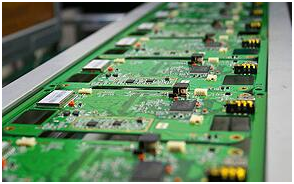Do you know why design impedance of PCB? _ Reason Analysis
What is impedance
In circuits with resistors, inductors and capacitors, the obstruction to alternating current is called PCB impedance.Impedance type:
1) Characteristic impedance
In electronic information products such as computer, wireless communication, the power of transmission in the circuit of PCB is a square wave signal of voltage and time (square wave signal, called a pulse), and the resistance it encounters is called the characteristic impedance.
2) Differential impedance
Drive end inputs two same signal waveform of the opposite polarity, transmitted by two differential lines, at the receiving end, these two differential signals are minus. The differential impedance is the impedance between the two lines---Zdiff.
3) Odd modulus impedance
There is a ground impedance in the two lines-Zoo, and the impedance values of the two lines are the same.
4) Coupling mode impedance
The driver end inputs two same signal waveforms of the same polarity, the impedance when connecting the two lines together---Zcom.
5) Common mode impedance
A ground impedance of a line in two lines---Zoe, the impedance value of the two lines is consistent, usually larger than the odd modulus impedance.

Why control impedance of printed circuit board?
In PCB production, impedance processing is essential, reasons are as follows,1) PCB wiring (bottom side) need to consider the installation of electronic components, after the insertion, consider electrical conductivity and signal transmission performance, so will require the impedance is the lower, the better. Resistivity below 1×10-6 per square centimeter.
2) PCB circuit board in the production process need to undergo immersion copper, electroplating tin (or electroless plating, or hot-sprayed tin), connectors solder, and so on process production links. And the materials used in these links must ensure the resistivity is low, in order to ensure that the overall circuit board impedance is low to achieve product quality requirements, can normal operate.
PCB plating or immersion Tin is where problems are most likely to occur in whole printed circuit board production, is the key to impact impedance. The biggest flaw of immersion Sn is easy to change color (both easy to oxidize or hygroscopic), will lead to PCB difficult to solder, high impedance lead to poor conductivity or instability of the board’s performance.
3) There will be various signal transmission in the conductor of PCB circuit board the frequency must be increased to increase its transmission rate.
4) If the line itself is due to different factors such as etching, lamination thickness, wire width, etc., it will cause the impedance to change. So that to distort its signal, resulting in the performance of the circuit board decline, so need to control the impedance value within a certain range.
【Print】